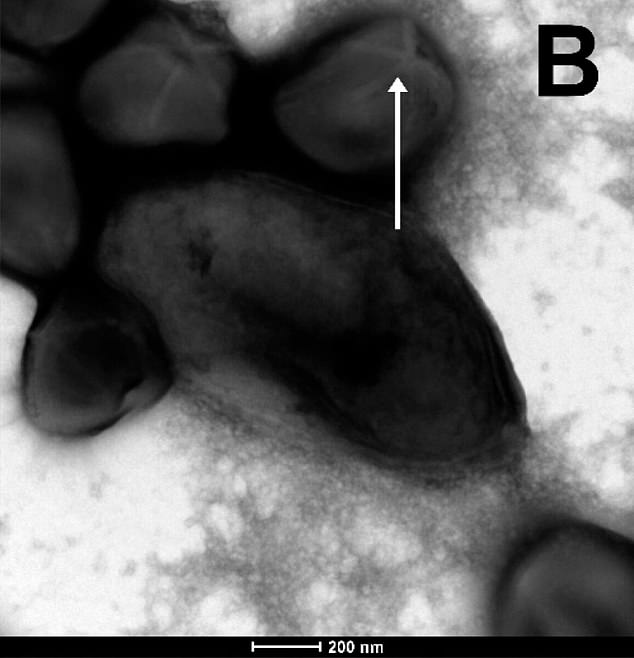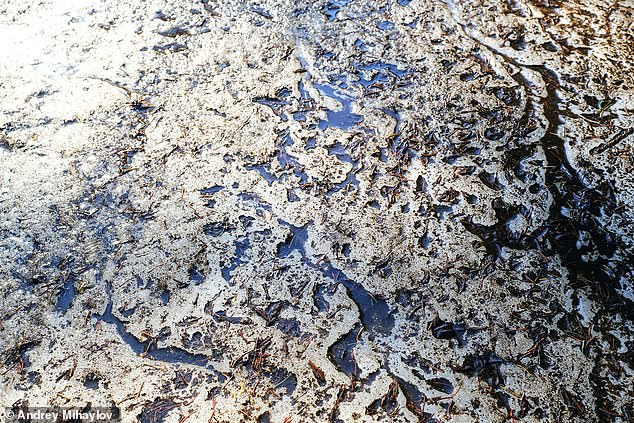Deadly ‘Factor X’ virus may be lurking in Earth’s permafrost – and could soon be unleashed thanks to climate change, scientists warn
>
The world is still recovering from the deadly coronavirus pandemic that has killed nearly seven million people – including about 230,000 people in the UK.
But scientists have issued a grim warning that an even deadlier ‘Factor X’ virus could be lurking in Earth’s permafrost, waiting to be unleashed.
Worse still, they say climate change has made it more likely that a host of deadly diseases will be unleashed that have been dormant for hundreds of thousands of years as the planet continues to warm.
That’s because frozen soil – or permafrost – cooperates with a large number of dormant microbial species, many of which scientists don’t talk about or don’t mention.
Experts warn that it could also unleash extinct diseases like smallpox or pathogens that wreaked havoc among our ancestors.
Terrifying: Scientists have issued a chilling warning that the deadly ‘Factor X’ virus could be lurking in Earth’s permafrost (pictured in Siberia), waiting to be unleashed

Waking up again: In 2022, scientists announced they had revived a 48,500-year-old virus found in thawing permafrost in Siberia (pictured)
“There is an X factor that we don’t really know much about,” says Birgitta Evengard, a professor of infectious diseases at Umeå University in Sweden. He told Newsweek.
“Deep in the permafrost, there must be microbes – especially viruses but also bacteria – that were on Earth long before Homo sapiens existed.”
According to virologist Jean-Michel Claverie, of the University of Aix-Marseille, ancient viruses that infected Neanderthals or mammoths and caused their extinction may also have been present within this permafrost.
When asked what might be hiding in the frozen tundra, he told Newsweek: “Viruses from extinct diseases like smallpox; Anthrax is always present, through areas contaminated with spores; As well as the accelerating spread of diseases already known (existing) in the Arctic today, such as tularemia, serious bacterial infections, or tick-borne encephalitis.
Scientists have highlighted six frozen pathogens that they believe pose the greatest threat to humanity.
Just last year, a team of experts also announced that they had revived a 48,500-year-old virus found in thawing permafrost in Siberia.
It is among seven types of viruses found in permafrost that have been revived after thousands of years.
The smallest has been frozen for 27,000 years, and the oldest, Pandoravirus yedoma, has been frozen for 48,500 years.
Although the viruses are not considered a danger to humans, scientists warn that other pathogens exposed to the melting ice could be “catastrophic” and lead to new epidemics.

Permafrost is ground that remains permanently frozen even during the summer months. Pictured: Arctic ice melting in spring
A warning shot came in 2016, when a heatwave in Siberia activated deadly anthrax spores, killing a 12-year-old boy and thousands of animals.
The term “permafrost” describes ground that has been frozen for two or more consecutive years, although some parts of Siberia have remained that way for more than 650,000 years.
Experts estimate that a quarter of the Northern Hemisphere lies above permafrost, but large areas are now melting as the world warms.
The planet is already 1.2°C warmer than it was in pre-industrial times, and scientists have warned that the Arctic could see an ice-free summer by the 2030s.
The Clarviri team first revived the viruses in 2014, focusing for safety reasons only on those that could infect amoeba.
Since 2019 alone, he has discovered 13 new viruses and warned that unknown ancient pathogens could have “catastrophic” effects on the human race.
(Tags for translation)dailymail
